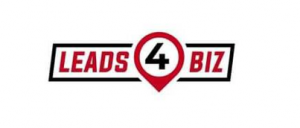
5 More facts you may not know about Air Conditioning.
5 MORE FACTS YOU MAY NOT KNOW ABOUT AIR CONDITIONING
Previously we discussed 5 facts you may not know about the air we breathe every minute of every day here
Today we continue with a further 5 important facts you may not know about Air Conditioning (AC).
6. Importance of Ducts
7. Increasing energy efficiency
8. Lightening the energy load
9. Ventilation
10. Humidity is worse than heat.
Importance of ducts
Ducts are used in heating, ventilation, and air conditioning (HVAC) systems to deliver and remove air. Ducts commonly also deliver ventilation air as part of the normal air supply in a building. One Common reason AC systems may appear not to be producing enough cold air is due to excessive duct leakage.
Duct leakage can reduce AC units effectiveness by around 20 to 40% of the energy used (even for a well-operating air conditioner, if the ducts pass outside the cooled space). Outside ducts need to be well insulated and various products specifically designed for such purpose can be installed by a professional contractor
. You may well be able to get an extra one half (1/2) ton of air conditioner capacity for little or no additional cost, literally “free”. If you seal your leaky ducts properly, you can soon get the room back to full capacity AC cooling (remember you will probably need professional technical help to seal the ducts effectively).
Increasing energy efficiency
Sealing leaky ducts is an important method of improving energy efficiency, addressing many of the issues mentioned above will help as well, including replacing dirty filters, maintaining the right charge and airflow and keeping the coils clean and free of harmful bacteria.
Another important step is to ensure the outdoor condenser unit is not hidden from sight such that its air flow is blocked and that autumn leaves or other extraneous matter are not clogging it. These are relatively simple maintenance methods that surprisingly few building owners and operators in fact use.
If you are buying a new air conditioner, it is recommended to buy high efficiency equipment. The most well-known efficiency rating is Seasonal Energy Efficiency Rating (SEER). SEER 13 is the minimum efficiency you should consider, but higher efficiencies are also likely to be cost effective.
South East Asia is hot and humid and the sun is extremely intense. Thailand in particular the metric system is used for measuring rooms. Lack of proper insulation (whether roof insulation, double glazing or cavity blocks for walls) is a frequent challenge – all these factors need to be taken into account when deciding which size air-con is most suitable for a room space or facility.
Depending on your climate, you may wish to consider other efficiency measures as well. For example, in hot, dry climates; be sure to look at the Energy Efficiency Rating (EER) which tells you how well the system will work at peak conditions. If you live in a hot, humid climate it is wise to consider how well the unit can dehumidify.
Lightening the energy load
One way to understand how AC units work is to think of them as having feelings! Go easier on them and lighten their load where feasible. You can make your AC unit work better by reducing the amount of the work it has to do.
You can do this by improving the building environment or by reducing the internally generated loads with which your air conditioner has to contend. Improving the building “envelope” by improving insulation levels, shading windows and generally reducing potential air leakage.
Such improvements often reduce significantly the energy used on heating and cooling, but can require substantive time commitment or an investment. When installing a new roof or new windows, it is usually cost effective to use high-efficiency products. Reducing internal loads can be as simple as shutting off unneeded electrical appliances, lights and equipment.
Ensure appliances that are used frequentky and create heat – such as large copy machines and printers – to operate at cooler times of the day. Use fans to cool rooms that are near doors where people open and shut entrances a lot. Buying Energy Star or similarly efficiency-certified appliances will help as well. Too many people buy an air conditioner that is too large, thinking it will provide better cooling. However, an oversized air conditioner is actually less effective — and wastes energy at the same time. Remember, air conditioners remove both heat and humidity from the air
Ventilation
The previous points focused on cooling, but the original definition of air conditioning in our first blog is more than that: an ideal air conditioner should heat, cool, clean, ventilate, humidify and dehumidify whenever required in order to provide health and comfort in all environments. One of the most important objectives of any AC unit is to provide ventilation. Whether or not an air conditioner provides it, ventilation is needed.
Without adequate ventilation, contaminants generated indoors can lead to significant health and comfort problems. There should be at least enough ventilation to exchange the air inside a house once every four (4) hours, depending on individual house design.
Older buildings tend to have leakier walls and leakier ducts and mostly get sufficient ventilation through such leakage. Such leakage and infiltration may not be the most energy efficient approach to ventilation and is therefore a likely opportunity for energy cost savings. Most new buildings and hotels have relatively tight building envelopes and thus require mechanical ventilation to meet minimum ventilation requirements.
Humidity is worse than the heat
Modern air conditioners dehumidify as they reduce temperature. You can see this by the water that drips away outside, but this dehumidification is secondary to their main job of controlling temperature.
They cannot independently control both temperature and humidity. In hot, humid climates the dehumidification that occurs may not always be enough to keep the indoor humidity conditions acceptable.
Best standards are at approximately 60% relative humidity. Maximum dehumidification does happen in the hot season when an air conditioner is running frequently, but during milder times of the year when the air conditioner runs very little it controls humidity less effectively.
There are several leading-edge air conditioning systems that are sold to manage humidity inedependently, although some cheaper systems may not be able to control the issue and instead may cause discomfort or mould problems, sometimes leading to Sick Building Syndrome or other illnesses.
These are the main facts that consumers need to know to lessen their need for dehumidification: When switched on, the fan blows air all the time whether your cooling system is running or not.
One key impact of this is that moisture in the AC system just removed from the air will be blown back into the room before it can drain away! Use domestic fans during moisture-producing activities. Cooking, showering or taking a bath and similar activities produce moisture inside a hotel room.
Similarly, hotel patrons may well dry clothes on radiators – potentially this could be a unique hospitality selling point; providing a dryer in your hotel or office or a clothes dryer model that has a vent that leads directly outdoors.
Do not open windows or use ventilated cooling when it is too humid outside. We hope these points will help consumers become more aware of important technical aspects of their AC systems and hopefully better able to care for them and use them well. If it becomes necessary to replace a system, always seek out a qualified HVAC professional to assist.
Aeris Environmental Ltd is a PLC company listed on the Australian AEX. All our AerisGuard products have been invented and patented by Aeris Environmental Ltd. AerisGuard solutions are a Green/Clean Technology only available from Aeris Environmental Ltd and distributed by AESS in SE Asia.
Advanced Energy Savings Solutions Ltd. (AESS) based in Bangkok distributes Aeris products in Thailand and provides advanced engineering and technical expertise required to diagnose air quality status and HVAC efficiency levels and then to deliver affordable, customized Indoor Air Quality and HVAC Energy Efficiency solutions for all types of governmental, commercial or industrial customers
These products and treatments progressively remediate Mould, Fungus and Biofilm. AerisGuards unique Enzyme-Cleaning process totally eliminates all known Mould, Fungus and Biofilm, which otherwise will prevent your HVAC coils from providing an efficient heat exchange.
Clean Technology: AerisGuard employs self-cleaning technology. After a coil has been treated with the antimicrobial coating, the product continues to keep the coil clean for up to twelve (12) months. This will improve the Internal Air Quality (IAQ) of your building and help provide a safe, healthy, comfortable and more energy-efficient environment.









